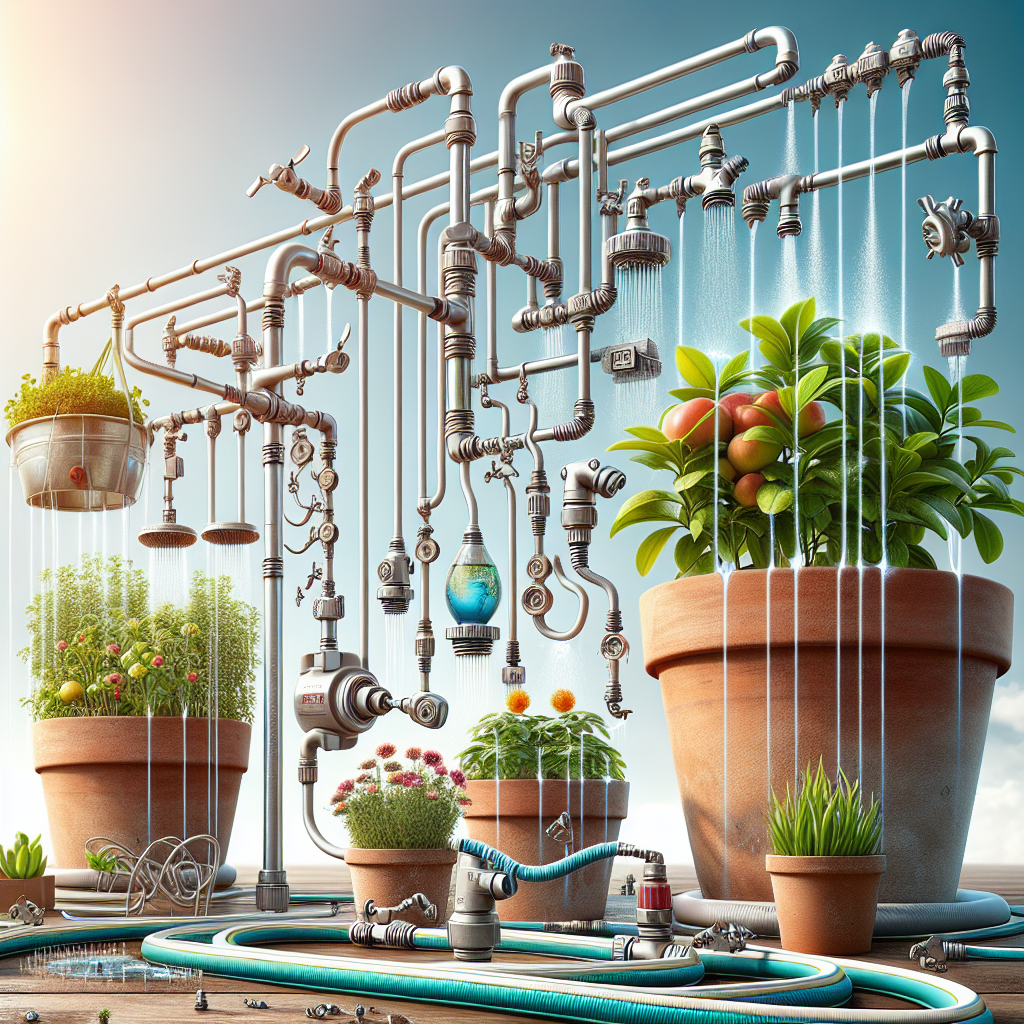Watering your potted plants can be a time-consuming task, especially if you have a large collection of pots. To make your watering routine more efficient and effective, consider installing a slow drip watering system for your pots. Slow drip watering systems deliver water directly to the roots of your plants at a controlled rate, ensuring that they receive the right amount of moisture without any waste. In this article, we will discuss how to optimize your slow drip watering system for pots to keep your plants healthy and thriving.
1. Choose the right system: Before you start setting up your slow drip watering system for pots, it’s important to choose the right system for your needs. There are several different types of slow drip systems available, including drip emitters, soaker hoses, and self-watering containers. Consider factors such as the size of your pots, the type of plants you have, and the amount of sunlight they receive when selecting a system.
2. Plan your layout: Once you have chosen a system, it’s time to plan out how you will install it in your garden or on your balcony. Start by mapping out where each pot is located and how many pots you need to water. Consider grouping pots with similar water requirements together to make watering more efficient.
3. Install the system: Next, it’s time to install the slow drip watering system in your pots. Depending on the type of system you have chosen, installation may involve connecting hoses or emitters to a main water source or filling self-watering containers with water. Make sure that each pot is receiving an equal amount of water to prevent over or under-watering.
4. Adjust the flow rate: One of the key benefits of a slow drip watering system is that you can adjust the flow rate to suit the needs of each individual plant. Some plants require more water than others, so it’s important to monitor how much water each pot is receiving and make any necessary adjustments. You can do this by turning valves or adjusting timers on your system.
5. Monitor soil moisture: To ensure that your plants are receiving the right amount of water, monitor soil moisture regularly. Stick a finger into the soil near each pot to check for moisture levels – it should feel damp but not soggy. If the soil is too dry, increase the flow rate of your watering system; if it is too wet, decrease the flow rate.
6. Mulch around pots: To help retain moisture in the soil and reduce evaporation, consider adding mulch around your pots. Mulch acts as a barrier between the soil and air, keeping moisture locked in and reducing water loss through evaporation.
7. Time your watering: The best time to water potted plants with a slow drip system is early in the morning when temperatures are cooler and evaporation rates are lower. This allows plants to absorb water more effectively before heat sets in during midday.
8. Clean and maintain: Regularly clean and maintain your slow drip watering system to ensure optimal performance. Check hoses for clogs or leaks, replace any damaged parts promptly, and flush out emitters periodically to prevent buildup from blocking water flow.
9. Consider automation: If you have a large number of pots or find it difficult to keep up with manual watering schedules, consider investing in an automated irrigation system with timers or sensors that regulate water delivery based on plant needs and weather conditions.
In conclusion, optimizing your slow drip watering system for pots can help save time and conserve water while keeping your plants healthy and thriving all season long. By choosing the right system, planning carefully, adjusting flow rates as needed, monitoring soil moisture levels regularly,
and maintaining proper upkeep practices,you can ensure that
your potted plants receive just
the right amount of hydration
they needbtoflourish.
Soil Moisture monitoring,
plant grouping based on Similar
water needs,Timed automated
watering among other best practices,
can help keep Your potted garden looking lush
and beautiful- even during warmer months when Water availability may be limited due
to seasonal variations . By following these tips,
you can create an efficient,
sustainable approach
to keeping Your plant collection
healthy while saving Time And Effort In The Long Run.
So why not Give Slow Drip Watering A Try Today And See The Difference It Can Make In Your Potted Garden!













